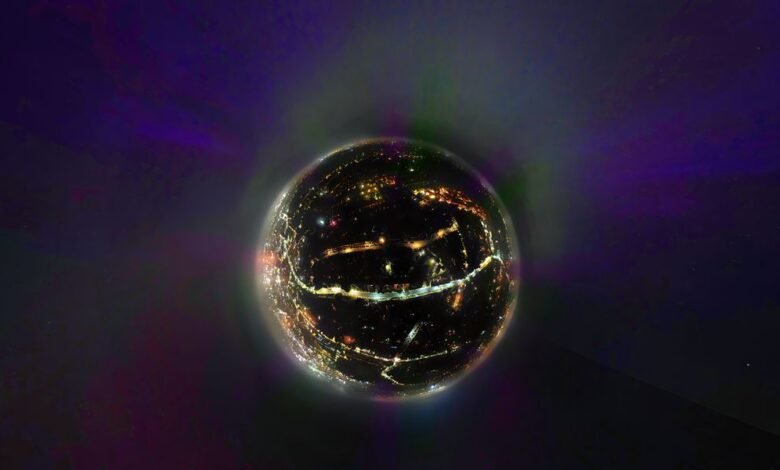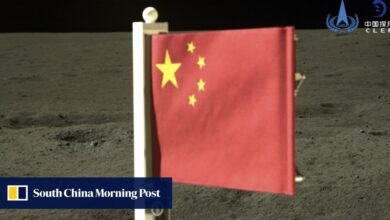NASA detects strange shapes resembling letters of the alphabet in Earth’s ionosphere

- Earth’s ionosphere protects us from harmful UV radiation, but despite the useful protection, this part of Earth’s atmosphere is incredibly complex.
- NASA’s Global-scale Observations of the Limb and Disk (GOLD) mission recently captured X- and C-shaped plasma bubbles that could interfere with communications.
- While these shapes have been seen before, GOLD captured them during “quiet periods” and in close proximity to each other — two things scientists didn’t expect.
Extending about 50 to 400 miles above Earth’s surface, the ionosphere is our world’s interface with space, as our life-supporting atmosphere gives way to a complex environment of electrically charged particles and magnetic fields. Understanding this layer of Earth’s atmosphere is vitally important for technologies like radio communication and GPS, but also for the overall health of the planet, as it absorbs the Sun’s extreme ultraviolet rays.
That’s why NASA gave the go-ahead for the Global-scale Observations of the Limb and Disk (GOLD) mission in 2013. Launched into geosynchronous orbit (GEO) by an Ariane 5 rocket in 2018, the dual-channel far-ultraviolet imaging spectrograph was a technological piggyback aboard the commercial SES-14 satellite (SES is a Luxembourg-based telecommunications satellite network provider). Its primary mission was to provide “unprecedented imagery” of the upper atmosphere, and it was the first mission to focus strictly on “thermosphere-ionosphere weather,” according to the University of Central Florida, one of several universities working on the project.
Over the next six years, GOLD fulfilled that mission, and in a new article published in the magazine Journal of Geophysical Research: Space PhysicsScientists reveal how this low-cost satellite appendage has altered our understanding of the ionosphere by revealing the strange behavior of X- and C-shaped plasma bubbles during unexpected, low-activity “quiet periods.”
“Previous reports of the merger have only occurred during geomagnetically disturbed conditions,” said Fazlul Laskar of the University of Colorado, who was the study’s lead author, in a NASA press statement. “This is an unexpected feature during calm geomagnetic conditions.”
These shapes have been seen in this slice of the atmosphere before, but usually during some moment of intense disturbance, either on the ground (erupting volcanoes) or in space (solar storms). However, because GOLD can track these blobs over time thanks to its position in GEO, it has been found that these shapes also form during relatively calm periods with little turbulence, something scientists did not expect.
These shapes form near Earth’s magnetic equator as charged particles move upward and outward, predictably along magnetic field lines, and the dense bands north and south of the equator are known as ridges. However, sometimes these usually straight blobs form curved C-shaped or inverted C-shaped lines, likely due to Earth’s winds; they can even form an X-shape as the lower atmosphere pulls plasma downward.
“The X is odd because it implies there are much more localized driving factors,” NASA’s Jeffrey Klenzing said in a press statement. “This is expected during extreme events, but seeing it during ‘quiet time’ suggests that lower atmosphere activity is significantly driving the ionospheric structure.”
GOLD also captured a rare phenomenon of two shapes — a C and an inverted C — less than 400 miles apart, and experts say two such shapes so close together “have never been thought of, never been imagined.” GOLD has captured this arrangement only twice before, and scientists expect it is likely due to some kind of strong turbulence, such as a gust of wind or even a tornado.
Understanding these shapes, as well as the overall complexity of the ionosphere, will help improve communications technologies while also preventing disruptions during major solar storms or other disturbances. The ionosphere is the protective shield that helps life flourish on Earth, and now that life is here, many of its lingering mysteries are finally beginning to be solved.
Darren lives in Portland, has a cat, and writes/edits about science fiction and how our world works. You can find his previous work on Gizmodo and Paste if you look hard enough.




